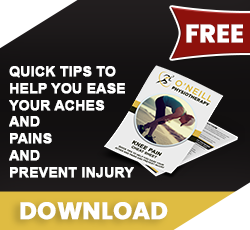Snow Safety Tips: How to Avoid Injury During the Heavy Snow
The good news? Preventing winter injuries is possible, and you can enjoy the season without unnecessary pain and stiffness. Read on to discover information about winter injuries and most importantly — health and safety tips to avoid such injuries.
What Are the Most Common Winter Injuries?
Winter weather conditions bring with them a variety of potential risks for personal injury, as well as injury to others. Some of the most common winter incidents that lead to personal injury include:
Falling on ice and snow.
Experiencing muscle strains from shovelling snow or scraping ice off the car.
Driving and motor vehicle collisions.
Accidents while playing winter sports and activities.
It is all important to note that not all incidents will cause severe injury, but some accidents can be quite serious, especially for certain age groups and for people suffering from previous injuries. Here are some of the activities that may lead to an injury:
1. SLIPPING AND FALLING ON ICE AND SNOW
Slipping and falling on ice can be a scary experience. Ice can be difficult to see both at night and during the day. What looks like water pooled on the pavement can be a sheet of ice. You could step off the kerb and onto a slippery ice patch. You may be able to recover and only skid briefly, but severe injury can occur if you fall to the ground. Potential injuries from falls on ice can include the following:
Head injury
Ankle strains and twists
Hip and wrist fractures
2. SHOVELLING SNOW
One of the most annoying winter jobs is shovelling the driveway. It can take a long time and require a lot of physical exertion. The low temperatures make the task of shovelling snow even more unpleasant. The repetitive actions of twisting and lifting while shovelling can cause severe strain on the body. All it takes is one muscle to be pulled the wrong way for your back, neck or shoulders to seize up.
3. DRIVING AND COLLISIONS
Most of us must continue to work and carry on with our normal, everyday activities even in snowy winter weather conditions. But if you aren’t prepared for winter driving conditions and don’t take the proper safety precautions, you can put yourself and others at risk. As we are in the middle of a red warning it is best to stay inside, relax and spend some time with your family.
4. FALLING OR COLLIDING DURING WINTER ACTIVITIES
One of the most enjoyable parts of winter is the fun you can have with your family with all kinds of winter activities and sports. From sledging to snow ball fights, there are plenty of ways to stay active and have fun in the winter. For kids especially, sledging is one of the best childhood memories of a snow day. Falls and collisions in many winter activities can cause several forms of injury. Broken bones and stiff muscles and joints are some of the most frequently reported injuries when it comes to outdoor sports and activities. Running outdoors on the footpath or on trails can also pose safety risks if the pavement isn’t salted and the trails aren’t properly cleared.
TYPES OF WINTER INJURIES
These activities produce various types of injuries, which can range from mild and easily treatable to severe and long-term. Some of the resultant injuries from these winter accidents most commonly include:
Head and shoulder injuries
Back injuries
Neck pain and tension
Knee joint pain and soreness
Wrist sprains
Elbow fractures and dislocation
Ankle sprains and strains
Hip fracture and soreness
Age Groups and Demographics Most Affected
Certain incidents and their resulting injuries may affect certain age groups more than others. It’s important to apply appropriate safety measures, so everyone can stay safe during the winter.
1. CHILDREN
Children are susceptible to falls. They can easily fall and injure themselves if they can’t reach handrails or don’t have proper balance. If your child experiences a fall, it’s important to first assess their head for any injuries and then check for elsewhere, like wrists and elbows. Children enjoy their time sledging and building snowmen, which can put them at risk for injury. Be sure to always supervise kids during winter activities and provide them with protective clothing to reduce the chance of injuries.
2. SENIORS
Like children, seniors are also at a higher risk of slipping and falling on an icy pavement. Seniors can easily lose their footing and take a fall that can put them in severe danger. Seniors who have suffered in the past from hip injuries could further damage their hips or back. Seniors should be accompanied and helped down driveways and across parking lots to ensure they are stable and have the support to walk safely.
Most businesses and shopping centres take precautions to salt their car parks and sidewalks once winter hits. Even still, patches may be missed, or ice may have formed since the last salting. When rushing into stores and shopping centres, slow down and take your time to carefully walk across the park. Look for areas that have been clearly salted or do not appear wet. Hold onto children and seniors to help stabilise them as you walk across the carpark or driveway and indoors.
Helpful Hints When Walking on Snow or Ice
Plan, give yourself sufficient time and plan your route.
Traffic moves slowly in snowy conditions.
Give yourself extra time–don’t assume a clear path for driving and walking will be available.
Wear shoes or boots that provide traction on snow and ice.
Footwear made of rubber and neoprene composite provide better traction than plastic and leather soles.
Wear flat-soled shoes. Avoid shoes with heels.
Use special care when entering and exiting vehicles, climbing or descending stairs, entering or leaving buildings.
Move slowly.
Remove snow/water from shoes when entering buildings.
Use handrails for support.
Use your car for support.
Keep your hands out of your pockets.
Walk on designated walkways as much as possible.
Don’t take shortcuts over snow piles or areas where snow and ice removal is not feasible.
Don’t text or read while walking.
Walk safely on snow or ice.
Take short steps or shuffle for stability.
Bend slightly forward and walk flat-footed with your centre of gravity directly over your feet as much as possible.
Be prepared to fall. If you fall, fall with sequential contacts at your thigh, hip and shoulder. Avoid using outstretched arms to brace yourself.
Bend your back and head forward to avoid hitting your head against the ground.
More commonly, the following is what happens to most of us.
We slip and fall on the ice. It hurts! We get up dust ourselves down and shake it off. We go about our day somewhat normally – but embarrassed. We are sore and stiff for a day or so – then life goes on. But wait… there is more.
Days, weeks and even months later we start complaining of things going wrong with our body. Over the counter medications and general check-ups bring no relief. Further diagnostics disclose little answers to our current pain and discomfort. We assume that “we are just getting older” and live with it. Some of us are guilty of not listening to our body.
I end with this thought.
Symptoms are the body’s way of telling you it needs help before the situation becomes an emergency. Please listen to your body.
If you fall and you feel you could have a fracture, please go to your local Accident and Emergency Department. An x-ray will not kill you but will give you clarity and allow you to treat the injury appropriately. Do not fear pain and do not feel you need to stop all activities. You can contact us in the clinic for support and advice at any time. But most of all enjoy the snow and take care!!



